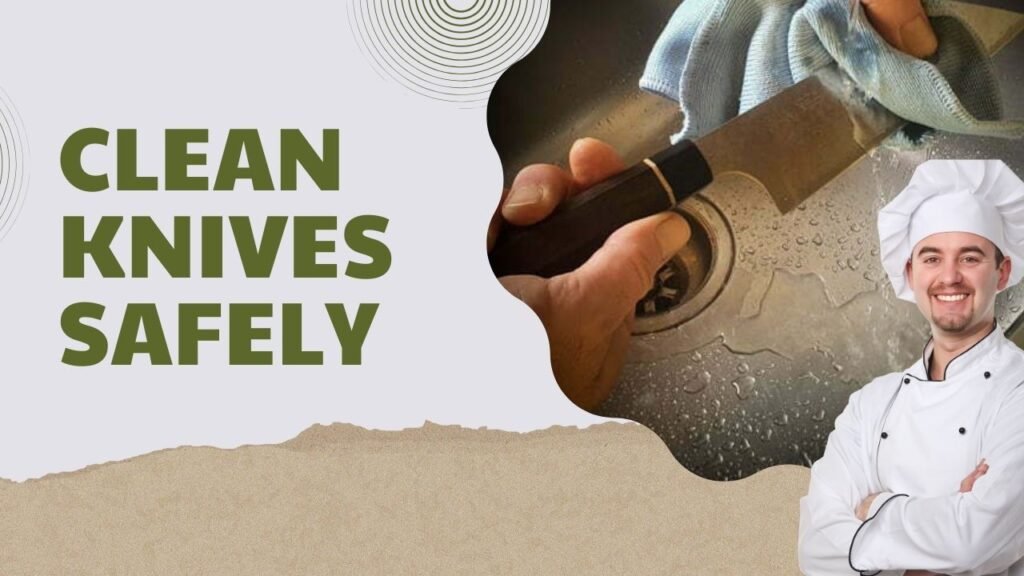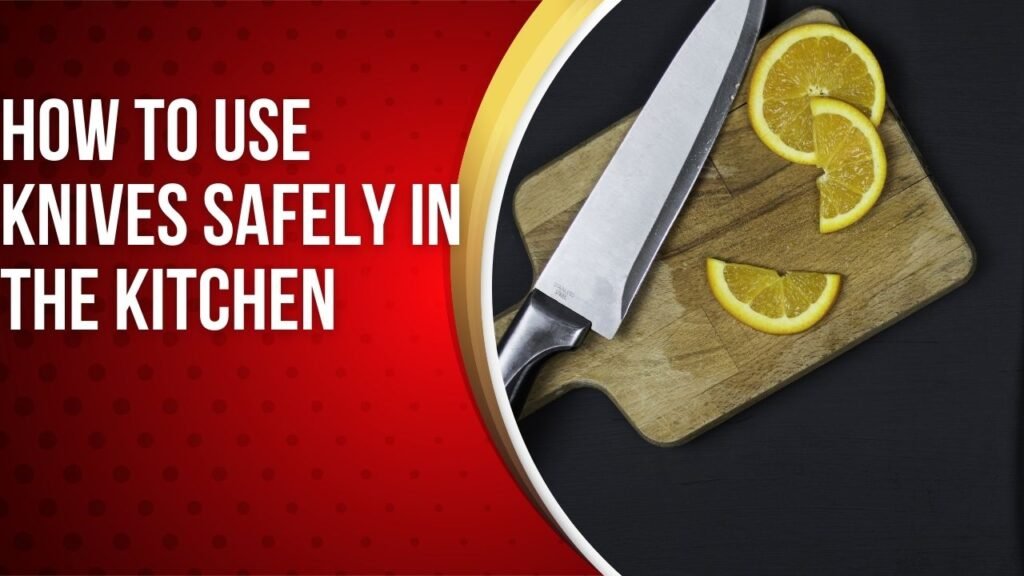Imagine effortlessly slicing through a ripe tomato without squishing it or deftly chopping vegetables without fearing a slip. Mastering how to use knives safely in the kitchen not only enhances your cooking experience but also ensures that your kitchen remains a hazard-free zone. Whether you’re a novice cook or a culinary expert, understanding knife safety is paramount. Let’s explore the essential techniques, best practices, and safety tips to help you handle your kitchen knives like a pro.
Why Knife Safety Matters
Knives are indispensable tools in the kitchen, but their sharpness and versatility can also pose significant risks if not handled correctly. Every year, millions of people suffer from knife-related injuries, many of which occur due to improper usage or lack of awareness. By learning how to use knives safely in the kitchen, you can prevent accidents, maintain your knives’ longevity, and create a more enjoyable cooking environment.
The Essentials: Types of Kitchen Knives
Before diving into safety techniques, it’s crucial to understand the different types of kitchen knives and their specific uses. Using the right knife for the task reduces the risk of accidents and ensures efficiency.
| Knife Type | Description | Best For |
|---|---|---|
| Chef’s Knife | Versatile with a broad, sharp blade. | Chopping, slicing, dicing |
| Paring Knife | Small, with a short blade. | Peeling, trimming, intricate work |
| Serrated Knife | Saw-like edge that grips and cuts through tough surfaces. | Bread, tomatoes, citrus fruits |
| Boning Knife | Thin, flexible blade for precision. | Deboning meat, filleting fish |
| Utility Knife | Medium-sized, all-purpose blade. | Slicing sandwiches, miscellaneous tasks |
Tip: Always choose a knife that feels comfortable in your hand and suits the task at hand to minimize the risk of accidents.
Proper Knife Handling Techniques
1. Master the Grip
A proper grip ensures better control and reduces the likelihood of slipping. Here’s how to hold a knife correctly:
- Pinch Grip: Place your thumb and index finger on opposite sides of the blade, just above the handle. Wrap your remaining fingers around the handle. This grip offers maximum control and stability.

- Handle Grip: Hold the handle with all fingers wrapped around it, similar to holding a pen. This grip is less secure but can be useful for lighter tasks.
Why It Matters: A secure grip prevents the knife from slipping, especially when cutting through slippery or uneven surfaces.

2. Use the Right Cutting Surface
Selecting an appropriate cutting surface is essential for both safety and knife maintenance.
- Wooden or Plastic Cutting Boards: Gentle on knife edges and provide a stable surface.
- Avoid Glass or Marble: These surfaces can dull your knives quickly and are more prone to causing the knife to slip.
Pro Tip: Keep your cutting board stable by placing a damp towel underneath to prevent it from moving while you cut.
3. Adopt Safe Cutting Techniques
The Claw Grip
To protect your fingers while cutting, use the claw grip:
- Curl Your Fingers: Tuck your fingertips inward, curling them into a claw shape.
- Guide with Knuckles: Let the side of your knuckles guide the knife, keeping your fingertips safely out of the way.
- Consistent Motion: Use a smooth, rocking motion to slice through ingredients, maintaining control throughout.
Rhetorical Question: Ever wondered why some chefs never get a finger out of place? It’s all about the technique!
Proper Stance and Posture
Stand with your feet shoulder-width apart for balance. Position yourself so that you can see the cutting board clearly, reducing the risk of accidental slips.
Personal Tip: I find that standing slightly sideways to the cutting board gives me better visibility and control over the knife.
4. Maintain a Sharp Knife
A sharp knife is safer than a dull one because it requires less force to cut, reducing the chance of slipping.
- Regular Sharpening: Use a sharpening stone or a professional service to keep your knives in top condition.
- Honing: Use a honing rod to maintain the edge between sharpenings.
Fun Fact: Contrary to popular belief, a sharp knife is less likely to cause accidents than a dull one.
Best Practices for Knife Safety
1. Focus While Cutting
Distractions can lead to mishaps. Always pay attention to what you’re doing when handling knives.
Rhetorical Question: How often do you multitask while chopping vegetables? It might be time to rethink that!
2. Store Knives Properly
Proper storage prevents accidents and preserves the knife’s edge.
- Knife Blocks: Store knives in a block with slots to keep blades safely tucked away.
- Magnetic Strips: Mount knives on a magnetic strip for easy access and safe storage.
- Blade Guards: Use protective covers for individual knives if storing in drawers.
Personal Preference: I prefer magnetic strips because they save counter space and make it easy to grab the knife you need without fumbling through a block.

3. Clean Knives Safely
Improper cleaning can damage knives and increase the risk of cuts.
- Hand Wash Only: Avoid putting knives in the dishwasher as the high heat and harsh detergents can dull the blades and damage handles.
- Dry Immediately: After washing, dry knives immediately with a towel to prevent rust and corrosion.
4. Handle Knives with Care
- Carry Knives Safely: When transporting knives, use a protective sheath or a knife bag to prevent accidents.
- Don’t Pass by the Blade: Pass knives handle-first to avoid cutting someone else.
Common Knife Injuries and Prevention
Understanding common knife injuries can help you avoid them. Here’s a table outlining typical accidents and how to prevent them:
| Injury Type | Description | Prevention Tips |
|---|---|---|
| Finger Cuts | Accidental slicing of fingers during cutting. | Use the claw grip, keep fingers curled. |
| Hand Lacerations | Deep cuts to the hand or palm. | Maintain a proper grip and stance. |
| Thumb Injuries | Cuts or bruises to the thumbs while chopping. | Guide the knife with knuckles, not thumbs. |
| Slipped Knives | Knife slips off the cutting board or hand. | Use a stable cutting surface, keep knife sharp. |
| Dropped Knives | Knives accidentally drop from the hand. | Hold knives securely and avoid distractions. |
Table: Quick Knife Safety Tips
| Safety Tip | Why It’s Important |
|---|---|
| Always cut away from your body | Minimizes risk of accidental cuts. |
| Use a stable cutting board | Prevents slipping and enhances control. |
| Keep knives out of reach of children | Reduces the risk of child-related accidents. |
| Don’t attempt to catch a falling knife | Avoids injury from sudden movements. |
| Regularly inspect knives for damage | Ensures knives are safe to use and in good condition. |
FAQs: Your Knife Safety Questions Answered
1. How Can I Teach My Children to Use Knives Safely?
Start with child-safe knives that have rounded edges. Supervise their activities, teach them proper grip and cutting techniques, and emphasize the importance of paying attention while cutting.
2. What Should I Do If I Accidentally Cut Myself?
Immediately apply pressure to the wound with a clean cloth to stop the bleeding. Clean the area with water, apply an antiseptic, and cover it with a sterile bandage. Seek medical attention if the cut is deep or won’t stop bleeding.
3. How Often Should I Sharpen My Knives?
It depends on usage. Frequent use may require sharpening every few months, while occasional use might need once a year. Regular honing between sharpenings can extend the time between full sharpenings.
4. Can I Use the Same Knife for All Kitchen Tasks?
While it’s possible, using specific knives for different tasks enhances safety and efficiency. For example, use a chef’s knife for chopping, a paring knife for peeling, and a serrated knife for bread.
5. Are There Safer Alternatives to Traditional Knives for Cutting?
Yes, some kitchen gadgets like mandolins and food processors can reduce the need for manual cutting. However, they come with their own safety considerations, so proper usage and precautions are still necessary.
Personal Reflections: My Journey to Safe Knife Usage
When I first started cooking, I underestimated the importance of knife safety. A few minor cuts were my introduction to the potential dangers. Over time, I learned that how to use knives safely in the kitchen is as crucial as mastering a new recipe. Investing time in learning proper techniques not only boosted my confidence but also made cooking a more enjoyable and stress-free experience. Now, I relish the precision and control that come with safe knife handling, turning every meal prep into a satisfying and safe endeavor.
Advanced Tips for Enhanced Knife Safety
1. Use a Bench Scraper
A bench scraper can help transfer chopped ingredients from the cutting board to the pan, reducing the need to handle the knife and lowering the risk of accidental cuts.
2. Organize Your Workspace
Keep your workspace clutter-free to ensure you have ample room to maneuver your knives safely. Organize ingredients and tools before you start cutting to minimize distractions.
3. Mind the Blade Angle
For tasks requiring precision, pay attention to the angle of your blade. Maintaining the correct angle enhances control and reduces the likelihood of slipping.
4. Stay Alert and Take Breaks
Fatigue can lead to mistakes. If you’re chopping for an extended period, take short breaks to rest your hands and maintain focus.
The Future of Kitchen Knife Safety
As technology advances, so do innovations aimed at enhancing knife safety:
- Smart Knives: Equipped with sensors to alert users of improper handling or angles.
- Ergonomic Designs: Knives with better grip and balance to reduce strain and improve control.
- Advanced Materials: Development of materials that stay sharper longer and are more resistant to corrosion, reducing maintenance needs and improving safety.
Conclusion
Mastering how to use knives safely in the kitchen is a blend of proper techniques, best practices, and continuous awareness. By understanding the different types of knives, adopting correct handling methods, maintaining your blades, and following safety tips, you can significantly reduce the risk of accidents and make your cooking experience both enjoyable and secure. Remember, safety in the kitchen starts with you. So, equip yourself with the right knowledge, practice diligently, and savor the art of safe and efficient knife usage.
Stay Sharp, Stay Safe!
Knives are powerful tools that, when handled with care and respect, can transform your cooking endeavors into delightful culinary creations. Embrace the responsibility that comes with using these tools, and prioritize safety to enjoy their benefits without the accompanying risks. After all, a well-handled knife not only makes your tasks easier but also ensures that you and those around you remain safe.
Additional Resources
- American Red Cross: Knife Safety Tips – Link
- Occupational Safety and Health Administration (OSHA) Guidelines – Link
- National Safety Council’s Kitchen Safety Information – Link
If you have any more questions or need further assistance on knife safety or any other topic, feel free to reach out!


